00 建立开发版与仿真器的连接
打开文件TMS320F28335.ccxml
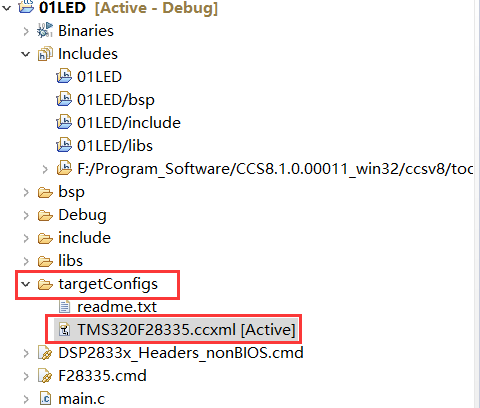
建立连接
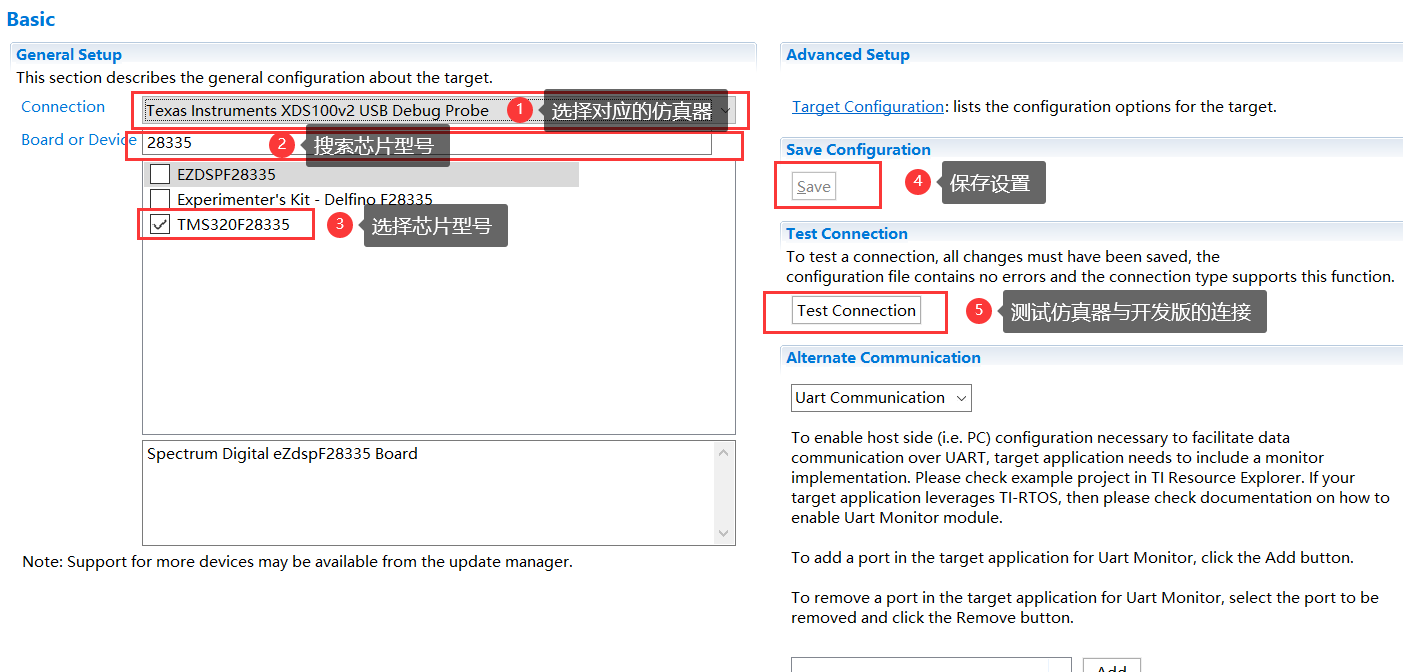
显示下述信息说明连接成功
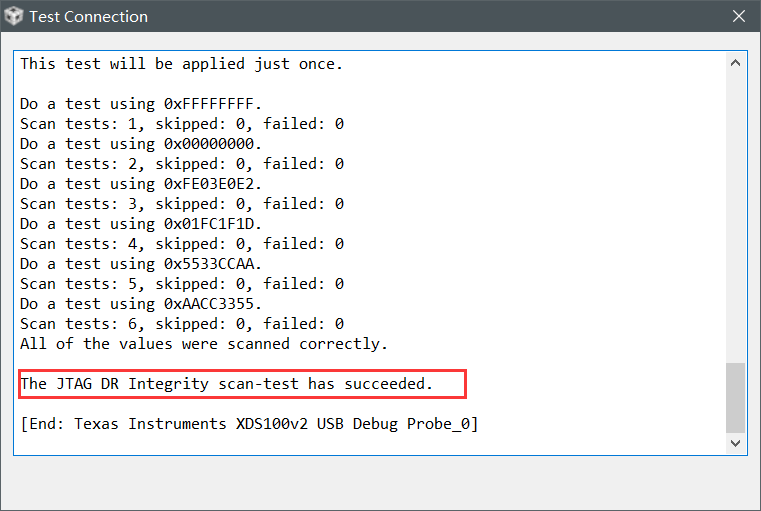
2 软件编程
1 系统时钟初始化
振荡器OSC和锁相环PLL初始化
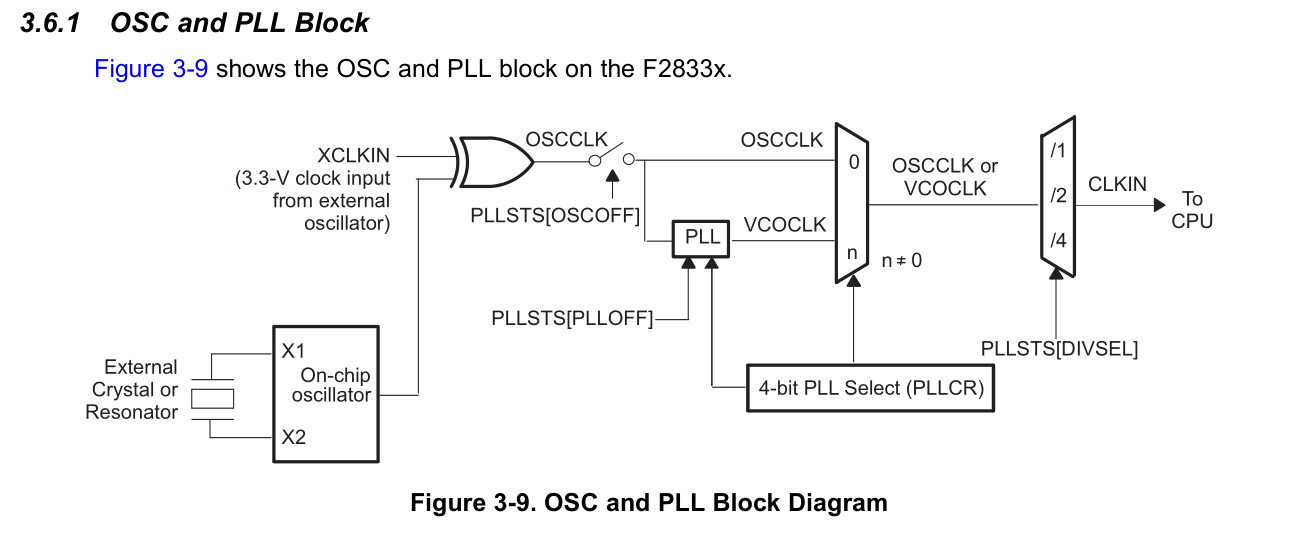
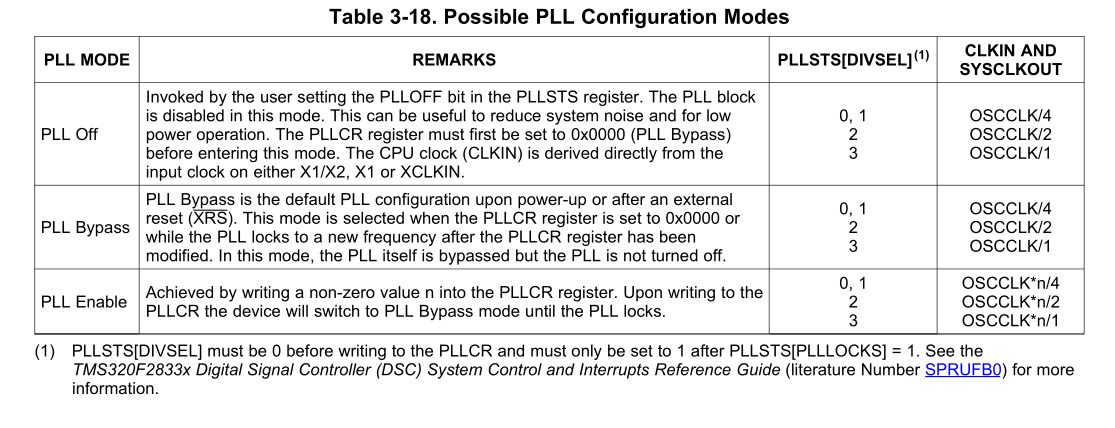
注意:
在写PLLCR寄存器前,PLLSTS[DIVSEL]必须是0。
初始化函数
InitSysCtrl();
void InitSysCtrl(void)
{
//
// Disable the watchdog
//
DisableDog();
//
// Initialize the PLL control: PLLCR and DIVSEL
// DSP28_PLLCR and DSP28_DIVSEL are defined in DSP2833x_Examples.h
//
InitPll(DSP28_PLLCR, DSP28_DIVSEL); // f=30M * DSP28_PLLCR / DSP28_DIVSEL =100MHZ
//
// Initialize the peripheral clocks
//
InitPeripheralClocks(); //使能外设时钟
}
// Optional: Wait for PLL to lock.
// During this time the CPU will switch to OSCCLK/2 until
// the PLL is stable. Once the PLL is stable the CPU will
// switch to the new PLL value.
//
// This time-to-lock is monitored by a PLL lock counter.
//
// Code is not required to sit and wait for the PLL to lock.
// However, if the code does anything that is timing critical,
// and requires the correct clock be locked, then it is best to
// wait until this switching has completed.
//可选:等待PLL锁定。
//在此期间,CPU将切换至OSCCLK/2,直到
//锁相环是稳定的。一旦PLL稳定,CPU将
//切换到新的PLL值。
//
//锁定时间由PLL锁定计数器监控。
//
//代码不需要等待PLL锁定。
//但是,如果代码执行任何对时间至关重要的操作,
//并且需要锁定正确的时钟,那么最好
//等待此切换完成。
使能外设时钟
使能有关外设时钟的寄存器为PCLKCR0/1/3,GPIO初始化在PCLKCR3中
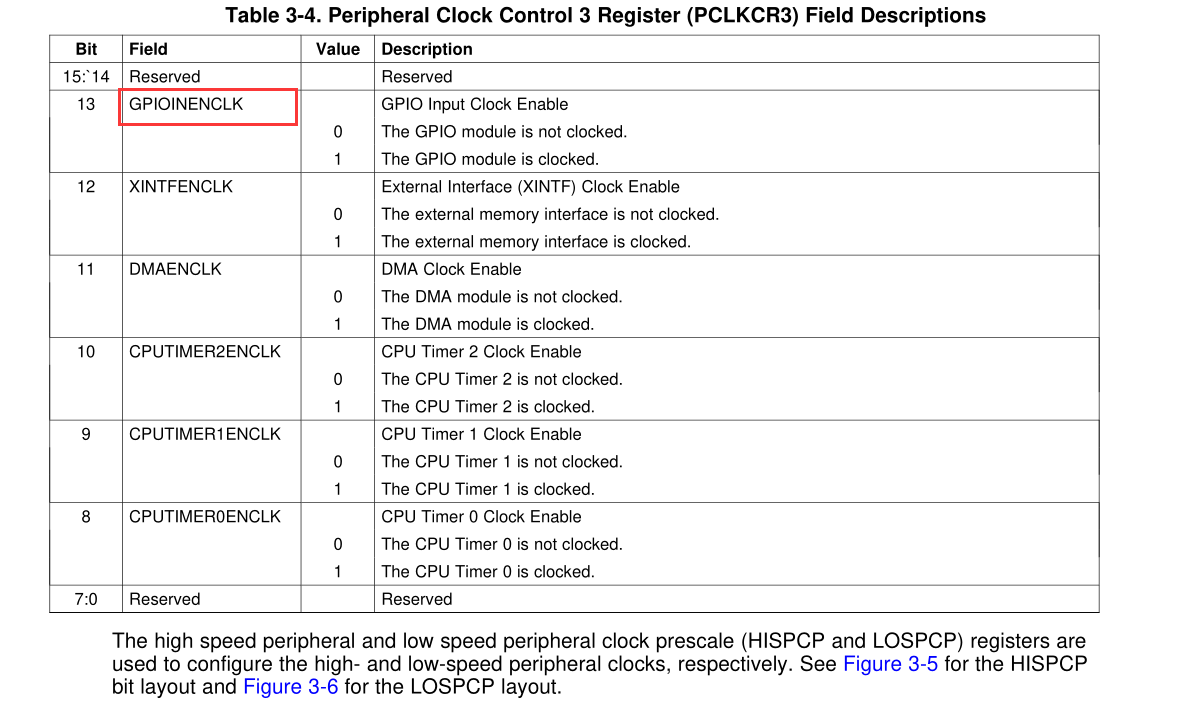
SysCtrlRegs.PCLKCR3.bit.GPIOINENCLK = 1; // GPIO input clock
2 初始化GPIO
On the 2833x devices, up to three independent peripheral signals are multiplexed on a single GPIO-enabled pin in addition to individual pin bit I/O capability. There are three 32-bit I/O ports. Port A consists of GPIO0-GPIO31, port B consists of GPIO32-GPIO63, and port C consists of GPIO64-87.
Figure 4-1 shows the basic modes of operation for the GPIO module.

初始化函数
InitGpio();
void InitGpio(void)
{
EALLOW;
//
// Each GPIO pin can be:
// a) a GPIO input/output
// b) peripheral function 1
// c) peripheral function 2
// d) peripheral function 3
// By default, all are GPIO Inputs
//
GpioCtrlRegs.GPAMUX1.all = 0x0000; // GPIO functionality GPIO0-GPIO15
GpioCtrlRegs.GPAMUX2.all = 0x0000; // GPIO functionality GPIO16-GPIO31
GpioCtrlRegs.GPBMUX1.all = 0x0000; // GPIO functionality GPIO32-GPIO39
GpioCtrlRegs.GPBMUX2.all = 0x0000; // GPIO functionality GPIO48-GPIO63
GpioCtrlRegs.GPCMUX1.all = 0x0000; // GPIO functionality GPIO64-GPIO79
GpioCtrlRegs.GPCMUX2.all = 0x0000; // GPIO functionality GPIO80-GPIO95
GpioCtrlRegs.GPADIR.all = 0x0000; // GPIO0-GPIO31 are inputs
GpioCtrlRegs.GPBDIR.all = 0x0000; // GPIO32-GPIO63 are inputs
GpioCtrlRegs.GPCDIR.all = 0x0000; // GPI064-GPIO95 are inputs
//
// Each input can have different qualification
// a) input synchronized to SYSCLKOUT
// b) input qualified by a sampling window
// c) input sent asynchronously (valid for peripheral inputs only)
//
GpioCtrlRegs.GPAQSEL1.all = 0x0000; // GPIO0-GPIO15 Synch to SYSCLKOUT
GpioCtrlRegs.GPAQSEL2.all = 0x0000; // GPIO16-GPIO31 Synch to SYSCLKOUT
GpioCtrlRegs.GPBQSEL1.all = 0x0000; // GPIO32-GPIO39 Synch to SYSCLKOUT
GpioCtrlRegs.GPBQSEL2.all = 0x0000; // GPIO48-GPIO63 Synch to SYSCLKOUT
//
// Pull-ups can be enabled or disabled
//
GpioCtrlRegs.GPAPUD.all = 0x0000; // Pullup's enabled GPIO0-GPIO31
GpioCtrlRegs.GPBPUD.all = 0x0000; // Pullup's enabled GPIO32-GPIO63
GpioCtrlRegs.GPCPUD.all = 0x0000; // Pullup's enabled GPIO64-GPIO79
// GpioCtrlRegs.GPAPUD.all = 0xFFFF; // Pullup's disabled GPIO0-GPIO31
// GpioCtrlRegs.GPBPUD.all = 0xFFFF; // Pullup's disabled GPIO32-GPIO34
// GpioCtrlRegs.GPCPUD.all = 0xFFFF; // Pullup's disabled GPIO64-GPIO79
EDIS;
}
3 清除所有中断 和初始化 PIE 向量表
DINT; // 禁用CPU中断
InitPieCtrl(); // 初始化 PIE 控制寄存器到默认状态,默认状态是全部 PIE 中断被禁用和标志位被清除
IER = 0x0000; // 禁用 CPU 中断和清除所有 CPU 中断标志位:
IFR = 0x0000;
InitPieVectTable(); // 初始化 PIE 中断向量表
4 添加用户具体代码
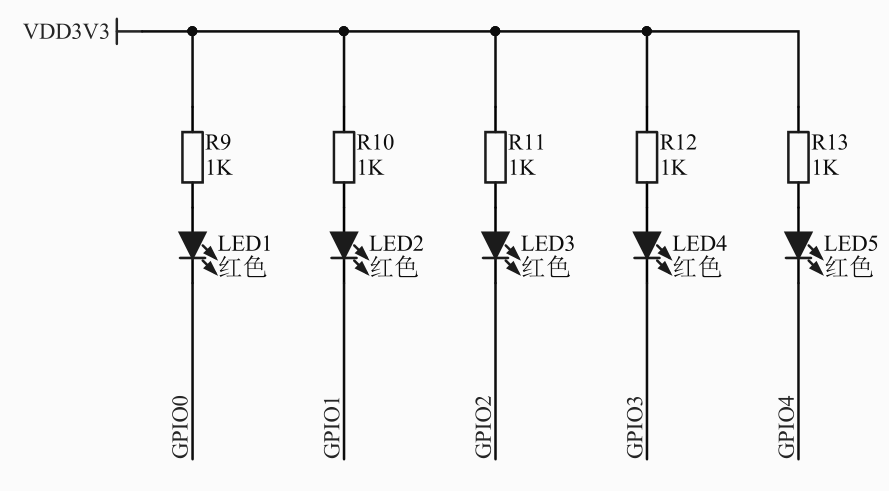
LED_GPIO_Config(); // LED端口初始化
void LED_GPIO_Config(void)
{
EALLOW;
GpioCtrlRegs.GPAMUX1.bit.GPIO0=0;//普通IO模式
GpioCtrlRegs.GPAPUD.bit.GPIO0=0;//使能内部上拉
GpioCtrlRegs.GPADIR.bit.GPIO0=1;//配置成输出
GpioCtrlRegs.GPAMUX1.bit.GPIO1=0;//普通IO模式
GpioCtrlRegs.GPAPUD.bit.GPIO1=0;//使能内部上拉
GpioCtrlRegs.GPADIR.bit.GPIO1=1;//配置成输出
GpioCtrlRegs.GPAMUX1.bit.GPIO2=0;//普通IO模式
GpioCtrlRegs.GPAPUD.bit.GPIO2=0;//使能内部上拉
GpioCtrlRegs.GPADIR.bit.GPIO2=1;//配置成输出
GpioCtrlRegs.GPAMUX1.bit.GPIO3=0;//普通IO模式
GpioCtrlRegs.GPAPUD.bit.GPIO3=0;//使能内部上拉
GpioCtrlRegs.GPADIR.bit.GPIO3=1;//配置成输出
GpioCtrlRegs.GPAMUX1.bit.GPIO4=0;//普通IO模式
GpioCtrlRegs.GPAPUD.bit.GPIO4=0;//使能内部上拉
GpioCtrlRegs.GPADIR.bit.GPIO4=1;//配置成输出
GpioDataRegs. GPASET.bit.GPIO0=1; //输出高电平
GpioDataRegs. GPASET.bit.GPIO1=1; //输出高电平
GpioDataRegs. GPASET.bit.GPIO2=1;
GpioDataRegs. GPASET.bit.GPIO3=1;
GpioDataRegs. GPASET.bit.GPIO4=1;
EDIS;
}
输出高电平
GpioDataRegs. GPASET.bit.GPIO0 = 1; //输出高电平
输出低电平
GpioCtrlRegs.GPACLEAR.bit.GPIO0 = 1;
5 编写主循环
while(1)
{
for ( i = 0; i < 5; i++)
{
GpioDataRegs.GPACLEAR.all = (0x01 << i);
delay_1ms(1000);
GpioDataRegs.GPASET.all = (0x01 << i);
delay_1ms(1000);
}
}
最后
以上就是微笑大象最近收集整理的关于DSP学习(一)GPIO操作00 建立开发版与仿真器的连接2 软件编程的全部内容,更多相关DSP学习(一)GPIO操作00内容请搜索靠谱客的其他文章。








发表评论 取消回复